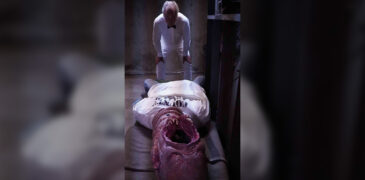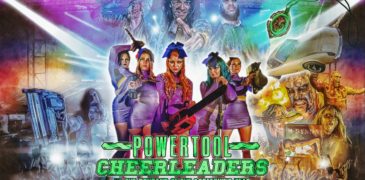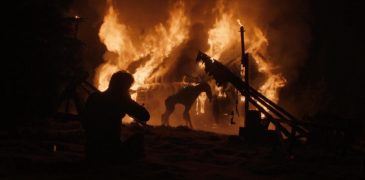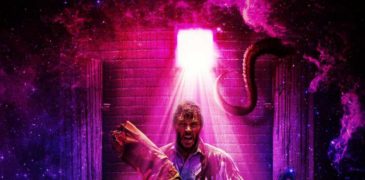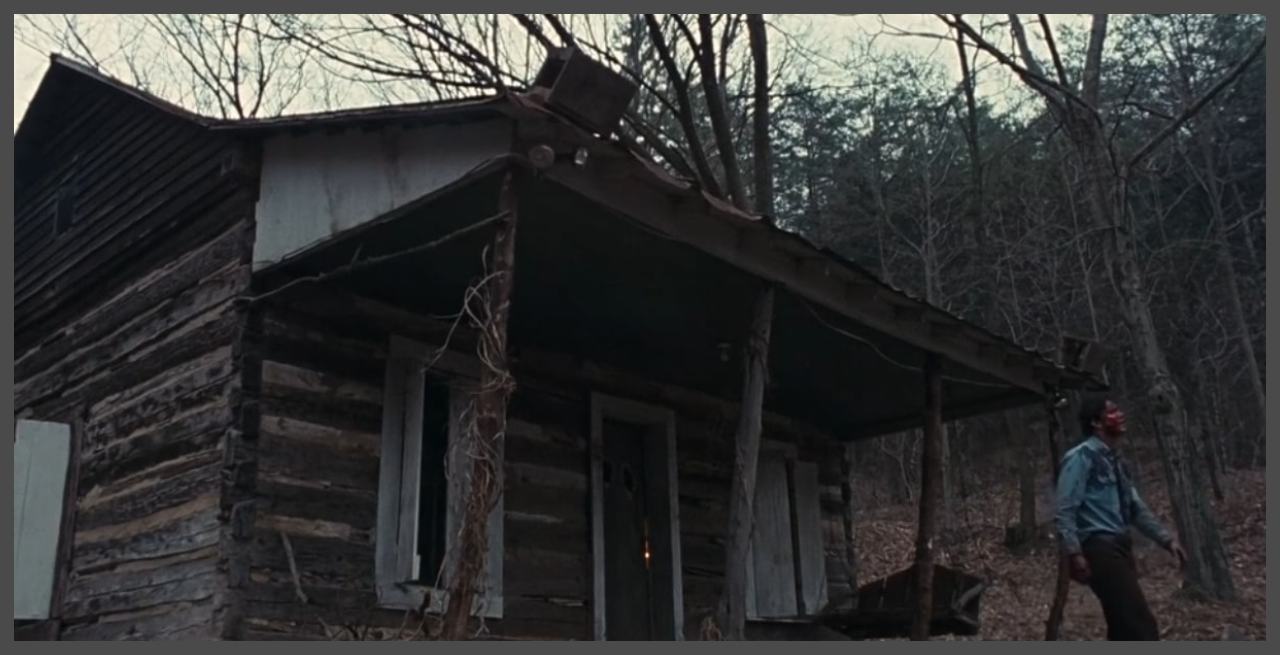
Famously, Game of Thrones switched actors between seasons due to reasons behind the scenes, and the replacement was clearly so from a radically different appearance, but the viewers suspended their belief of the change as inconsequential if not superficial – continuity was retained as was immersion; the plot, lore and design were all intact conceptually without any compromise and it was merely a technical alteration due to external production reasons. Increasingly, we witness this, too, with CGI substitutes of deceased people or those of changing age to the film chronology – an inconsistency is formed and patched, but it is accepted as natural for cinematic trends due to meta ramifications. Evil Dead 2 is a classic example of a muddied sequel, frequently confused as a remake, which had production reasons for fundamental changes, and the audience failed to accept these from a poor implementation, clearly separating Evil Dead 2 from Evil Dead 1 despite the obvious intention of the titles (1>2) along with thematic developments (Ash’s actualization as the hero we know and adore). The trilogy is therefore horribly corroded as three films in succession – they’re not viewed as a set for a deeper appreciation.
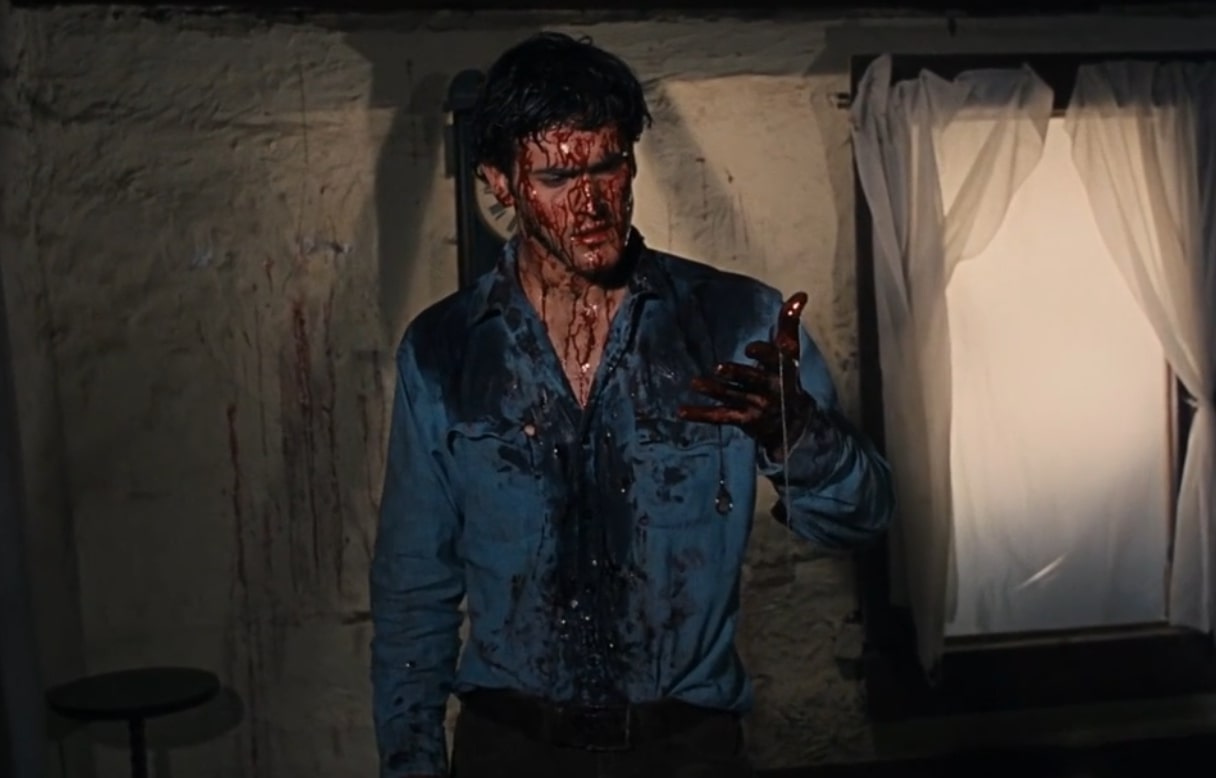
Evil Dead 2 was officially a sequel to 1, but licenses prevented their use of content from 1 and reusing footage to offer a preview of 1 to newer audiences – a critical setup to understand for a sequel emulating the manner of Halloween 1 (original) transitioning to Halloween 2. Consequently, they had to reshoot a prologue to represent the first film, prerequisite for context, but budget forced them to embrace fundamental changes which would have the film as viewed independently – Ash’s experiences of Evil Dead 1 are vastly different from those imagined in Evil Dead 2. Fans of the first, or Evil Dead as a whole, would understand the prologue was only there to inform newer viewers (especially prevalent considering how distribution of the first was widely restricted) and have them enjoying/understanding Evil Dead 2 as itself without any dependence on the first, an isolated film. Characters are reduced from a group to only he and his girlfriend of the original – all events are rushed along with streamlined.
A viewer must only skip the contrived prologue, which should not be disregarded as a retcon and instead considered a production necessity, to see where Evil Dead 2 directly continues from Evil Dead 1 – 8 or so minutes into the film. Of course Linda, Ash’s girlfriend, is of enduring importance to him as the night continues, and the Necronomicon being burnt achieved nothing as the ending of Evil Dead 1 revealed – all following logically from the original groundwork. A few incongruous details only require an essential ‘suspension of belief’ as inherent anyway to creatives works – for example, the original set location being unavailable or Ash having matured slightly. Why have we not had a cut version, however, which smoothly connects 1 to 2, polishing any of the inconsistencies? The answer could be that Evil Dead 2 is able to stand alone and not viewed as an integral part of a trilogy – it is that much of an accomplishment; it is also amusing posturing, too, for a studio to have formerly limited the production in any way (original not required in success for the sequel).
Army of Darkness (Evil Dead 3), too, is also a direct sequel to Evil Dead 2 – all three films are a linear experience defining Ash’s character development over the three instalments. In Evil Dead 1, Ash Williams is a hesitant and meek protagonist who succumbs to the terror in paralysis, but as the finale concludes, he’s finally developing a confidence where he accepts the demand of his circumstances – he is able to react decisively. Evil Dead 2 further develops Ash into unabashed confidence equalling his insanity as a result of trauma from Evil Dead 1, but it takes until Evil Dead 3 to finally balance him into the most assertive form we know, formed from these brutal nights at the cabin . Ash successfully progressed from the passive everydayman in Evil Dead 1 to a buccaneering ‘smart alec’; Evil Dead 2 serving as the crucial bridge into this beloved, cocky state through the massive disparity of him from 1 versus 3.
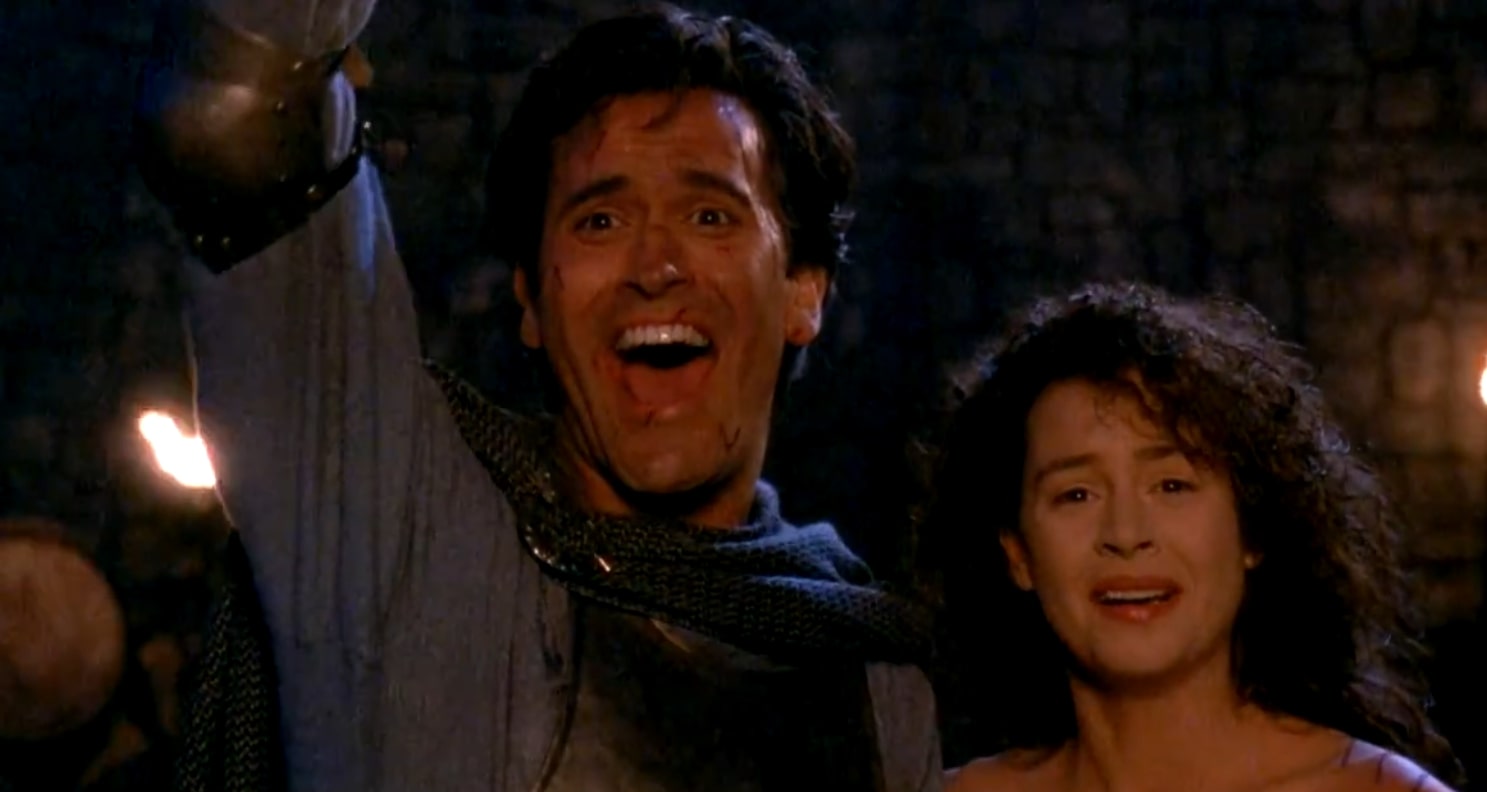
In the sequel that is Evil Dead 2, which should officially continue from where Ash escapes possession as dawn breaks, it continues into a second day where the following events happen: Linda’s remains return from Evil Dead 1, Henrietta emerges from the cellar soil to finally appear, and several new people arrive at the cabin (who’re also connected to the Necronomicon originally discovered there). Ash has to endure a second night of torment, lose another group of people, and the suffer lasting consequences of the first night (Linda savagely returning, his girlfriend, as the most important person) – all bestowing a certain sympathetic gravitas for his ensuing madness.
Ash vs Evil Dead also supports this linear narrative with Cheryl Williams’s resurrection, omitting the inconsistent prologue of Evil Dead 2 to acknowledge she was at the cabin and ultimately died. The first eight minutes of Evil Dead 2 – no matter how much of a fun but simplified recap – must be accepted as a tacked-on production sequence of little bearing to either the plot or overall trilogy (which it endangers in terms of cohesion). At old age in Ash vs Evil Dead, Ash is obnoxious as ever, but in the context of a trilogy which embroiled him into constant despair throughout three successive movies, it is perhaps sympathetic he is this way – the persona was adopted in Army of Darkness to overcome the insanity, briefly evident in Evil Dead 2, which would otherwise engulf him. Maybe Ash, too, is aware and ashamed of his weakness in Evil Dead 1 where he lost his partner, sister, and best friend – everybody of significance to him – to have fully weaponized the ultimate personality he had when no longer powerless, fearing a repeat of trauma which rippled across the franchise in a way misconceptions about Evil Dead 2 has undermined.
We are also finally able to accept the transition of genres as representing Ash’s development – 1 being Ash’s vulnerability as straightforward horror, 2 as comedy to represent his mental breakdown, and 3 as an action to portray his evolution from having been strengthened into a true hero after overcoming all events of the predecessors. Ash’s journey of losing all those close (Evil Dead 1), ending up alone for terrifying harassment (Evil Dead 2), and finally out of time with all he knows (Evil Dead 3) is a definite journey to admire – Ash vs Evil Dead is no surprise when we see the withering but assured existence of Ash.
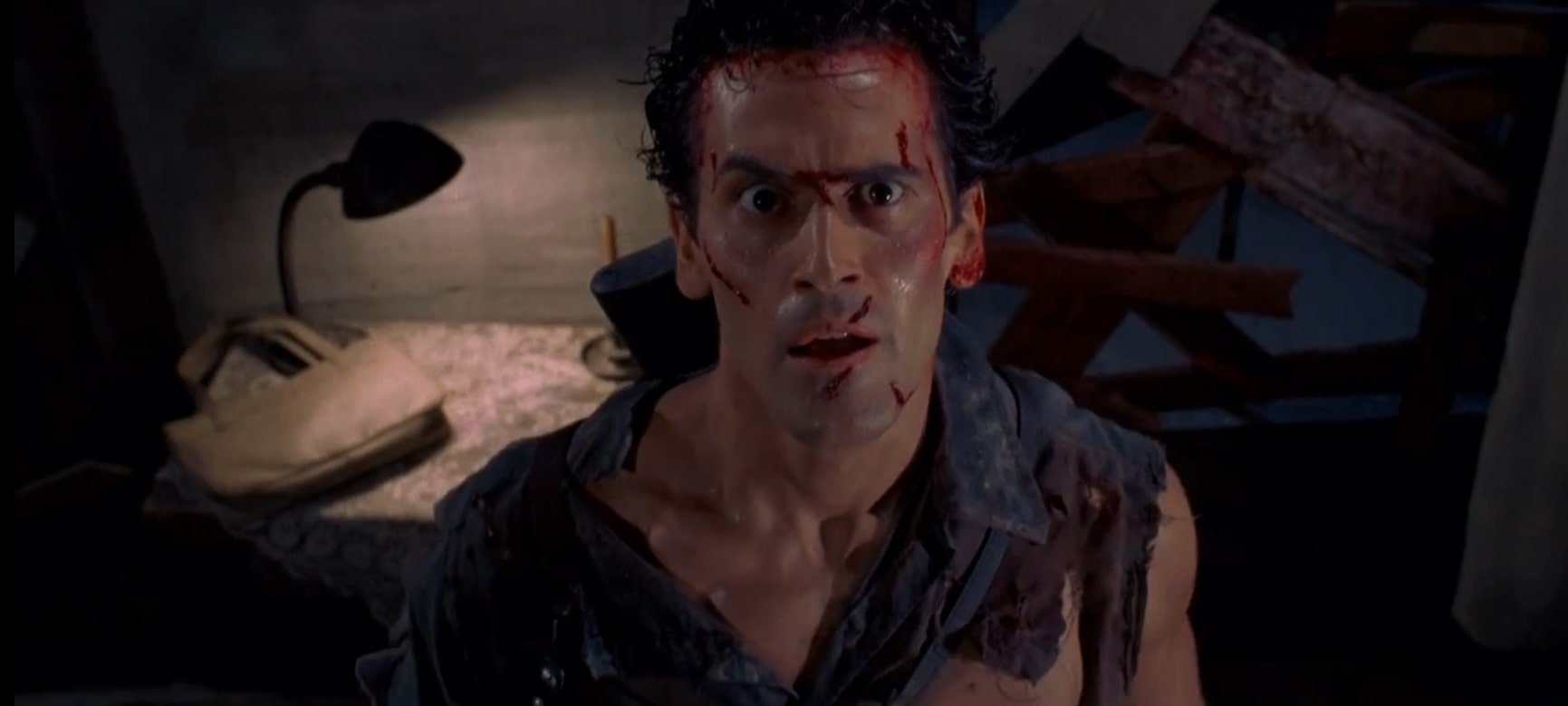
Those unable to accept Evil Dead 2 as a direct sequel, where we must ignore a segment of the incredible second film (fun as the abridged rendition of 1 is), we must only consider how Evil Dead 2’s ending was replaced partially in Army of Darkness – Ash is imprisoned and not celebrated. The initial ending details were rejected, however, and we only later follow the general idea in Army of Darkness, a medieval time travelling excursion, but the ending is still a valid continuation of 2 once we overlook a few minutes or details – imperative to respect the trilogy integrity as having any smoothness. Now we must only replace the opening of Evil Dead 2 in our minds, perhaps practically in a ‘special edition’, alongside respecting the janky editing flow of Evil Dead as an endearing quality of the trilogy – the flaw expressing a colourful production history…
As a fun interpretation to defend any incoherence, maybe the campy and hysterical regression of Evil Dead 2, which mirrors Ash’s volatile mental state, could also signal the transformation of supposed continuity into the arbitrary perspective of an unreliable narrator’ – a nice little pretence to explain such canon defects? Or, instead of retroactive fan rationalisation, maybe we have to accept cinema is not perfect, grindhouse never had the highest standards of technical accuracies and the overarching story is envisaged by fallible humans? Evil Dead mocks the absurdity of fans demanding any cohesive lore for a campy, twisting adventure? Lore – oh, how a fan would crave a perfect lore of a harmonious universe…
We also have Bruce Campbell’s take, too, regarding the nature of Evil Dead 2 as a sequel and not a remake, but maybe Sam Raimi, who is the ultimate voice as the creator, could definitively confirm as much – no circumstantial assumptions or hearsay of the cast?
More Film Reviews
Unspeakable: Beyond the Wall of Sleep is a 2024 horror film, written and Directed by Chad Ferrin. The film is an adaptation of H.P. Lovecraft’s short story Beyond The Wall… Musicals are my thing, they have been for as long as I can recall enjoying cinema, there is something so inherently magical about the world breaking out in song. For… “A flock of sea eagles attack the coastal town of Santa Cruz, California. Why did the birds attack? Who will survive?” The Birdemic series has been a guilty pleasure of… Until c.1080 CE, the Temple of Uppsala stood tall and proud outside Gamla Uppsala, Sweden. The temple served as a place of worship and community dedicated to pagan deities such… Fresh off its world premiere at Fantasia and coming exclusively to Shudder this week, director Rebekah McKendry’s new film Glorious is a mildly amusing slice of cosmic horror that does… The international shorts on offer at this year’s Toronto After Dark Film Festival are among the strongest of the entire lineup. From bizarre Norwegian folk horror to a one-night stand…Unspeakable: Beyond the Wall of Sleep (2024) Film Review – An Inventive Yet Deferential Reimagining
Powertool Cheerleaders vs the Boyband of the Screeching Dead (2022) Review – Sing Into The Chainsaw!
Birdemic 3: Sea Eagle (2022) Film Review – Have You Heard of Global Warming?
The Ritual (2017) Film Analysis – The Demonization of Paganism
Glorious (2022) Film Review – An Arterial Spray of Cosmic Horror
Toronto After Dark Film Festival 2022 – International Shorts After Dark Showcase
Some say the countdown begun when the first man spoke, others say it started at the Atomic Age. It’s the Doomsday Clock and we are each a variable to it.
Welcome to Carcosa where Godot lies! Surreality and satire are I.
I put the a(tom)ic into the major bomb. Tom’s the name!
